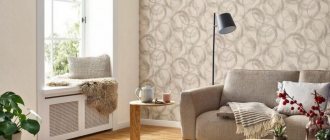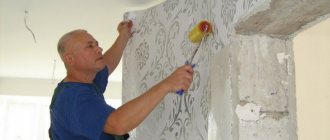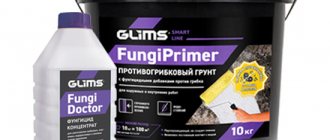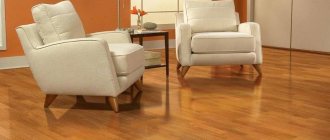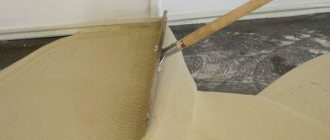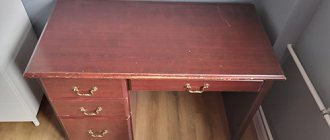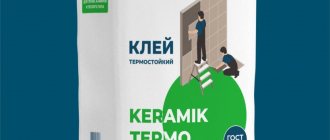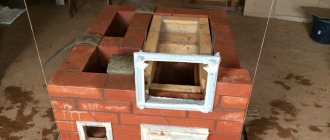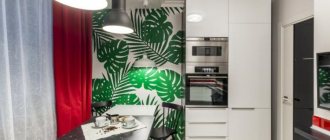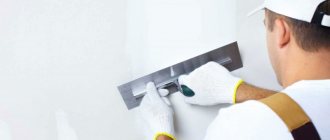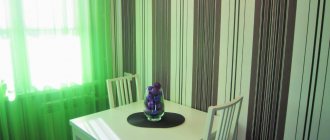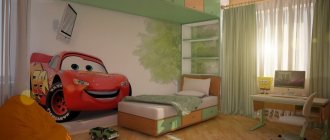A cozy interior necessarily means beautifully decorated walls. To decorate them, you can use paint, panels and other materials, but the most popular option is wallpaper. They play a serious role in the perception of the entire interior as a whole, so it is important to choose their appearance correctly.
In addition, you need to pay attention to performance characteristics. We will discuss all these nuances in detail in the article.
What to consider when choosing quality wallpaper
Of course, the wallpaper should match the style of the interior and look harmonious, but an equally important factor is its quality. Wallpaper from an unscrupulous manufacturer will last you only a short time, so the first thing you need to pay attention to is:
- Environmental friendliness. Wallpaper must be made from safe materials.
- Moisture resistance. This is especially important for the kitchen and children's room.
- Density.
- Easy to care for.
- Resistance to fading and abrasion.
- Fire resistance.
Good wallpaper that meets all of the above criteria may cost more than lower-quality analogues, but in the future you will feel that they are fully worth their cost. They will not have to be re-glued for many years.
Wallpaper for furniture
In this matter, you should adhere to certain criteria regarding color combinations. They are reflected in the table below:
| Furniture | Wallpaper tones | Effect |
| Brown | Sand, beige, yellow | Associations with warmth |
| Beige | Green, pistachio | Peace, spiritual harmony |
| Blue | Pale blue, ivory, white | Fabulous atmosphere |
| Burgundy | All shades of white | Respectable, cozy interior |
| Peach | Pastel, light lilac | The optimal solution for a nursery creates a beneficial effect on its inhabitants. |
| Orange | White, pale lilac | Creating an extravagant style |
| Black or gray | Warm greens | Relieving tension |
Paper wallpaper
The most common wallpaper. They can have one or two layers. The choice of paper wallpaper is huge: ordinary smooth, with three-dimensional patterns and designs, corrugated. When choosing, pay attention to the weight - the heavier the roll, the better the quality of the wallpaper.
This type of wallpaper is the cheapest, but also the most unreliable.
Features of anti-vandal wallpaper
Each type of coating has characteristics that characterize its resistance to external influences and suitability for use in certain rooms (houses):
- resistance to grease stains and acids;
- fire resistance (do not burn, but smolder at high temperatures);
- high density and moisture resistance;
- resistance to mechanical damage and temperature changes.
Let’s say right away that ideal anti-vandal wallpaper does not yet exist, but there are some that are created for rooms for various purposes. Considering these features, you can choose the best anti-vandal wallpaper for the kitchen, children's room, office space, corridor in the medical center and even the bathroom. When buying canvases, you should listen to the advice of experts on choosing and read the characteristics on the packaging.
What types of especially durable wallpaper are there?
Wall coverings with an anti-vandal effect are classified by type depending on the technology and materials of manufacture.
Contact wallpaper
These are canvases in which the bottom layer is vinyl or textile, and the top layer is high-density material - pressed vinyl.
Additionally, to strengthen both layers, they are impregnated with antiseptic compounds, which protect the material from mold. Contact wallpaper does not fade in the sun; it can be washed using a brush or sponge. Such coatings are often used in areas with heavy foot traffic: shops, hotels, salons, hospitals.
Glass wallpaper
The most environmentally friendly and durable anti-vandal wallpaper. The manufacturing material is glass, processed in a special way to obtain glass fibers for the manufacture of canvas.
Such wall coverings are becoming more and more popular every year, all because they:
- “breathe” (i.e., allow air to pass through);
- do not burn;
- do not absorb odors;
- are not afraid of the claws of cats and dogs;
- moisture resistant.
As a finishing material of increased strength, glass wallpaper today is often used in private homes where pets are kept and in public buildings with high traffic.
Non-woven anti-vandal wallpaper
Less durable than previous types, but it is easier to remove dirt from them, they breathe, are resistant to temperature changes and are distinguished by a huge color and stylistic variety.
Extra-durable non-woven wallpaper is made by hot stamping followed by laser heat treatment. Such canvases are suitable for any living room: children's rooms, bedrooms, living rooms. Another undoubted advantage is that with the help of such coatings you can hide the uneven surface of the walls.
Laminated wallpaper
This type of anti-vandal wallpaper is made on a paper or non-woven base, i.e., like regular wallpaper, but covered with polyvinyl chloride on top. It strengthens the canvas and allows you to remove almost any dirt from its surface, including markers, pens and felt-tip pens. This is very important if there are small children at home.
The range of laminated anti-vandal wallpapers today includes many canvases with unusual patterns, photo wallpapers (for example, William Morris wallpaper), which expands the boundaries of their use: kitchen, living room, corridor, children's room, playroom, etc.
Non-woven wallpaper
They combine the advantages of paper and vinyl wallpaper. The composition is 70% cellulose, the rest is connecting materials. Thanks to this, the wallpaper acquires increased density without losing breathability and practicality.
As a rule, the surface of non-woven wallpaper is embossed. If you want to transform the interior, they can be easily repainted several times. Also, such wallpapers initially have an adhesive layer, which simplifies their gluing.
What is anti-vandal wallpaper
In fact, the answer lies in the name itself. The coating is designed in such a way that it becomes as resistant as possible to absolutely any damage, be it scissors, animal claws or other non-standard situations.
On top there is high-density decor, and therefore it will be extremely difficult to make a visible scratch on such wallpaper. They perfectly “resist” the attempts of a cat or dog to sharpen their “manicure” or even tear off a piece of linen. Of course, such wallpaper is not immune to damage, but the problem will not be as noticeable as it would be with a conventional finish.
In addition, protection is provided by another additional layer, which resists shock from household chemicals, acids, grease and alkali. Moreover, they can be cleaned much more often than, for example, paper sheets.
Anti-vandal wallpaper is an excellent choice for those who have pets or small children who explore the world and love to decorate the walls. The only caveat is that it is important to correctly determine the type of material.
@a-xiom.ru
What to look for when choosing wallpaper
The first step is to decide for which room you are choosing wallpaper. Their characteristics must match the room. For example, for a child's room, the best option would be wear-resistant, washable wallpaper. Also consider whether you plan to repaint the walls in the future, or if you're ready to just change the wallpaper.
Pay attention to the symbols on the label and, of course, choose wallpaper that matches the interior.
Wallpaper for the hallway
What wallpaper to choose for the hallway
Wallpaper for the hallway should be dense, resistant to mechanical damage and resistant to wet cleaning. A good option is washable wallpaper or those that can be painted.
Vinyl wallpaper fully meets these requirements. They tolerate wet cleaning, retain their decorative qualities for a long time and are affordable. Non-woven wallpaper can also be used to cover the walls in the hallway. The undoubted advantage of this type is its suitability for repeated painting. The most expensive, but also the most durable wall material is fiberglass wallpaper. This type combines the advantages of vinyl and non-woven wallpaper.
The materials for making such wallpaper are quartz sand, soda, limestone and clay. The woven fabric is impregnated with a solution of modified starch.
Fiberglass wallpaper is characterized by very high wear resistance and is not susceptible to mechanical damage. They can be cleaned and washed without fear of damaging the surface. The claws and beaks of pets will also not be able to damage such a coating. Fiberglass wallpaper lends itself well to painting, which only emphasizes its texture. The service life of such wallpaper reaches 30 years.
Symbols on wallpaper
Be sure to read the wallpaper label. All information is indicated there: the level of moisture and light resistance, care rules, gluing features. When calculating the number of rolls, you will also have to refer to the markings.
There are the following letter designations that provide information about the type of wallpaper:
- A – acrylic;
- B – paper;
- BB – foamed vinyl;
- PV – flat vinyl;
- RV – embossed vinyl;
- TKS – textile wallpaper;
- STR – structural wallpaper for painting;
- STL – glass wallpaper.
The width and length of the roll can be found on the label. According to the standard, the length is 10 m and the width is 0.53 m or 1.06 m.
Which wallpaper is better to choose?
To answer this question, you must first of all know what types of wallpaper there are and understand their features. Below you will learn about the 12 main types of wallpaper, their strengths and weaknesses, as well as which one is best to choose for a particular room?
What types of wallpaper are there?
Wallpaper for walls comes in 12 types, which in turn can have their own varieties. So, let's begin.
Paper
This type of wallpaper is the most environmentally friendly and inexpensive, but at the same time the most fragile. There are, of course, two-layer paper wallpapers, but they are still inferior in wear resistance to other types of wallpaper. Double-layer paper wallpaper can have a raised pattern.
Paper wallpaper is afraid of moisture and temperature changes. They are difficult to glue because single-layer wallpaper can stretch or even tear due to the glue. Paper wallpaper is of little use for gluing to poorly prepared walls. On such wallpaper all the irregularities and roughness will be visible. It is among paper wallpapers that a canvas width of 0.53 m is often found. The price of paper wallpaper for 1 linear meter with a canvas width of 0.53 m starts from 15 - 20 rubles.
Non-woven
The basis of non-woven wallpaper is a polymer using cellulose. That is why they are the younger brother of paper wallpaper. In terms of environmental friendliness, they are in no way inferior to paper wallpaper, but they are an order of magnitude superior to them in strength. They are easy to glue. Thanks to their paid nature, they do a good job of hiding uneven walls. Non-woven wallpapers tolerate moisture better than paper ones. They can be wiped with a damp cloth. Such wallpapers are easier to glue than paper ones (the glue can be applied directly to the wall). By the way, non-woven wallpaper can be painted (read about how to choose paint for walls here). They are often used for painting, which allows you to periodically update the walls without removing the wallpaper. However, it should be taken into account that non-woven fabric is more expensive than paper. The price of such wallpaper will range from 120 to 350 rubles per linear meter.
Acrylic
The base of such wallpaper is paper and acrylic coating with a specific texture is applied to it. Wallpaper in terms of weight and structure of the material is reminiscent of non-woven wallpaper. They are quite environmentally friendly and breathable. This wallpaper is great for living spaces. The moisture resistance of acrylic wallpaper is higher than that of paper, at the level of non-woven wallpaper, but inferior to vinyl.
The density of acrylic wallpaper is at the level of non-woven fabric, so they can also withstand light wet cleaning. However, due to the structured porosity of the canvas, such wallpaper is easy to damage. If we talk about the price of acrylic wallpaper, it is not much different from non-woven wallpaper. The cost of 1 linear meter with a width of 0.53 m is on average 200-400 rubles.
Vinyl
Vinyl wallpaper is made using PVC (vinyl), which is applied to a paper or non-woven base. They have a fairly dense structure, which gives the wallpaper strength. They can be used in the hallway. Such wallpaper also tolerates relative humidity quite well. They are suitable for use in the kitchen. In addition, they can be washed, and some models even require washing with brushes.
Vinyl wallpaper has the widest variety of colors, shades and design patterns, even silk-screen printing. However, vinyl wallpaper has a significant drawback: due to the use of PVC (vinyl), of all types, it is the most non-ecological wallpaper. It is better not to glue them into the children's room. The price range for vinyl wallpaper is very wide. It all depends on their quality: the base is paper or non-woven fabric, as well as the manufacturer. One linear meter 0.53 cm wide costs from 40 to 700 rubles.
Fabric
The basis for fabric wallpaper is non-woven fabric or paper, onto which a layer of cotton, linen, viscose, silk and other fabrics is applied. Thanks to the use of a fabric layer, the structure of such wallpaper can be not only smooth and silky, but also velvety, with a relief pattern. Depending on the width of the canvas, you can find wallpaper from 70 cm to 130 cm and even more.
Fabric wallpaper is considered environmentally friendly and allows walls to breathe. They are used in the interior of living rooms or bedrooms. You can also opt for more luxurious bespoke offerings created by artists. With countless design offerings, there is sure to be something for everyone.
Among the disadvantages, one can note their “capriciousness” in terms of care. For the most part, such wallpaper is not suitable for wet cleaning and is susceptible to fading from sunlight. But their biggest drawback is their very high cost - 1 m2 will cost 4000-5000 rubles.
Bamboo
Strips of bamboo, reed, and jute are applied to a base of fabric or thick paper using special glue. The width of the canvas can be 91 - 250 cm (depending on the manufacturer). Such wallpaper is usually called bamboo. Due to their environmental friendliness and exquisite wood structure, they are very popular. In addition, such wallpaper is practical and durable.
Bamboo wallpaper is highly breathable and washable. They are difficult to damage, and small scratches on them are barely visible. Bamboo wallpaper can be used in any room in your apartment, including the bathroom. Often such wallpaper is used to decorate ceilings. This wallpaper is easy to install yourself and does not require special care. However, bamboo wallpaper also costs a lot; 1 m linear, 1.8 m wide costs about 1,500 - 3,000 rubles.
Cork
Cork wallpaper is made from compressed wood chips with the addition of resins. Based on this, the most important advantage of such wallpaper is its environmental friendliness. Such wallpapers have good sound and heat insulation. Wallpaper made from cork is treated with special impregnations against fungus and fading in the sun, as well as fire.
However, cork wallpaper requires thorough preparation of the surface for its application. In addition, such wallpapers have a narrow color palette - brown colors. Well, their biggest disadvantage is their high cost of high-quality cork fabric. True, you can find wallpaper made from cork from 400 rubles per 1m2. However, their average price is 1000-1200 rubles per 1 m2.
Quartz
Such wallpaper consists of two layers: non-woven backing and quartz sand. Their undeniable advantage is the environmental friendliness and naturalness of the material. In addition, such wallpaper does not require careful preparation of the walls. Due to its texture, quartz wallpaper is perfect not only for the kitchen, but also for the living room and children's rooms.
Wallpaper made from quartz is the safest in terms of fire safety. Such wallpaper is resistant to abrasion and mechanical damage. They are easy to glue and can be painted with acrylic. The cost of quartz wallpaper is also quite high, although the price range is wide. You can find wallpaper for 450 rubles per 1 linear meter with a width of 0.53, and you can also find a price of 5000 for 1 linear meter with a width of 0.98 m.
Glass wallpaper
Fiberglass wallpaper is made from glass fibers, which are produced using special equipment by melting the glass mass. Such wallpapers have many advantages: they are environmentally friendly, are not particularly picky about the quality of wall preparation, and also have various patterns and colors.
Fiberglass wallpaper is very durable and wear-resistant. They have excellent sound insulation. Their high strength and wear resistance extend the service life of such wallpapers to 30 years. And so that you don’t get tired of them, it’s enough to simply repaint them a different color. But perhaps their biggest advantage is the price! Such wallpapers are relatively inexpensive. The price of the cheapest wallpaper for painting does not exceed 50-50 rubles per linear meter in a roll 1 m wide. Higher quality fiberglass wallpaper will cost about 100-150 rubles per 1 linear meter.
Liquid
Liquid wallpaper in its structure and method of application to the surface resembles decorative plaster. However, their composition is radically different from this building material. Liquid wallpaper includes: cellulose or cotton, carboxymethylcellulose and decorative additives (granules, glitter, etc.). Thanks to their structure, they create a fabric effect on the wall.
The positive qualities of liquid wallpaper include: environmental friendliness, seamless application, and breathability. Such wallpaper is easy to apply to walls. They perfectly hide all the irregularities and imperfections on the surface being repaired. In case of damage, the damaged layer can be easily removed and replaced with a new one. It’s easy to update liquid wallpaper using acrylic or water-based paint. A big plus is the relatively low cost of liquid wallpaper. For example, a 1 kg package of liquid wallpaper costs about 600-1200 rubles (that is, on average 1000 rubles). This amount of material is enough to cover 4.8-5 m2 of wall. This means that 1m2 of liquid wallpaper costs on average 160-200 rubles.
Among the negative qualities, I would like to note the unaesthetic quality of cheap liquid wallpaper options. They look like a wall hanging. In addition, liquid wallpaper is afraid of damp rooms and, in addition, collects a lot of dust.
Metallized
Metallic wallpaper is made in two layers. A second layer of foil is applied to a paper base or non-woven fabric. These wallpapers look very elegant and their designs are very diverse - from classic to high-tech. Metallized wallpaper is resistant to fading and is not afraid of moisture.
The disadvantages of metal wallpaper include the need to carefully prepare the walls before wallpapering (all irregularities are visible). Also, metal wallpaper does not allow air to pass through well (it is not recommended to place them in a nursery).
If we talk about the cost of metallized wallpaper, then the price range here is quite significant: from 150 to 2000 rubles for 1 linear meter with a width of 0.53 m.
Photo wallpaper
Photo wallpapers are a solid canvas or rolls of paper, non-woven fabric, vinyl, or fabric with a photo print. Typically, photo wallpapers are produced in rolls with a standard size of 0.53x10 m. However, you can also find photo wallpapers with other sizes: 1.06 m wide or more, and 15, 20 and even 30 meters long. However, most often photo wallpapers are used to decorate a room and are glued to one of the walls.
Fans of non-standard solutions can choose something specially prepared for them by ordering personalized wallpaper - photo wallpaper. Special photo studios make a drawing prepared by artists using latex ink, which is odorless and does not threaten our health. In such cases, people order custom-sized wallpaper from photo studios, of which there are a great many on the Internet.
The photo wallpapers themselves can be either simplex (single-layer) or duplex (double-layer). Accordingly, their strength and cost will depend on the number of wallpaper layers.
If we talk about the positive qualities of photo wallpapers, then first of all we need to consider their basis - environmental friendliness, sound and air permeability will depend on it. All other characteristics are practically no different from the above types of wallpaper.
Photo printing only adds an additional component in the form of an increase in the cost of such wallpaper. In addition, photo wallpapers may differ in texture: smooth, canvas, linen, sand, which also affects their cost. Photo wallpaper in rolls costs from 450-500 rubles per 1 square meter. Seamless photo wallpapers (canvases) are much more expensive - 1 m2 will cost 1000-2000 rubles.
Is it worth saving when choosing wallpaper?
One of the common mistakes is buying the cheapest wallpaper. It is worth remembering that the better the quality of the wallpaper, the more durable and beautiful the repair you will get. Wallpaper is the basis of the room, its background, which can be either accent or neutral. In any case, low-quality and tasteless wallpaper is always noticeable, no matter what function it serves, and even expensive furniture will not save the situation.
In the store it may seem that cheap wallpaper is not so bad. However, when gluing them, you will most likely encounter many problems: they can tear, wrinkle, and highlight the unevenness of the walls. Over time, the design often fades or is completely erased, and the wallpaper peels off.
Wallpaper functionality
The most important function of wallpaper is decorative. In addition to the fact that they hide minor wall defects, such as pores, crevices, cracks, they also serve as the background of the room, a fundamental element of decor.
- It's blowing from the window - what to do?
The hygienic function is that the walls and ceiling on which wallpaper is glued are easier to keep clean. Most types of wallpaper can be cleaned and washed, and some can even be vacuumed.
Among other things, wallpaper made from fleecy materials can provide additional sound absorption.
We can also talk about the optical function of wallpaper, since different colors and textures can create the impression of a larger or smaller space than it actually is.
How to choose the right type of wallpaper
Another mistake is buying the wrong type of wallpaper. Consider the features of the room where you plan to glue them:
- You can choose any wallpaper for the living room and bedroom. Textile ones look especially interesting - they make the interior more expensive and elegant.
- It is best to glue vinyl wallpaper to the kitchen - it is easy to wash off any dirt from them, which cannot be said about their paper counterparts.
- The same rule applies to the hallway. There is a big risk of dirty shoes staining the wallpaper, so you need it to be moisture resistant.
- Sometimes wallpaper is even applied to the bathroom. Here, of course, you need to give preference to washable wallpaper; glass wallpaper is also suitable.
- In a children's room, it is most convenient to hang inexpensive paper wallpaper. Children often draw on the walls, so it won’t be a shame to change the finish. A good solution is to purchase glass wallpaper that can be repainted several times. Another interesting option is special wallpaper for drawing in the nursery. They come in three types: marker, chalk and coloring. In the first two cases, the drawings can be erased.
Chalk wallpaper is very practical not only in a children's room. For example, they can be used in the kitchen, sticking them next to the work area, and writing notes and recipes there.
How to decide on the color of wallpaper for the hallway?
If it’s quite easy to decide on the type of wallpaper for the hallway, then you’ll have to rack your brains with their colors .
On the one hand, wallpaper for a small hallway, in which it is difficult for two people to pass each other, should be dark in color.
On the other hand, the same dark color will make an already small room smaller What should I do?
The answer is simple: give preference to wallpaper in neutral shades. Let it be sky blue, lilac or light brown colors.
To prevent dust that appears over time from spoiling the overall appearance of the walls, use a coating of variegated colors. the drawing itself is preferable to a dark color so that it contrasts with the light main background of the wallpaper.
Pistachio wallpaper for the hallway
Gray wallpaper for the hallway
Note! Dark wallpaper colors will help hide possible stains.
How to choose the appropriate shade when buying wallpaper
Poorly chosen wallpaper can ruin the entire impression of the room. Wallpaper should look harmonious in the interior and not stand out, unless, of course, you set yourself the goal of making one of the walls an accent wall. Even when wallpaper becomes the highlight of the decor, you need to remember the rules for combining colors and the features of the room.
When choosing a wallpaper color, pay attention to:
- Room size. Wallpaper can greatly change the visual perception of space. In small rooms you should not make black walls, as the room will become even cramped and uncomfortable. It is better to choose light colors - they will create a feeling of spaciousness and enliven the room. White, beige, and light gray will help create a relaxed and calm atmosphere. These are neutral colors that are also great for creating a subtle backdrop, which will allow all the attention to be directed to the furniture. In spacious rooms, it is quite possible to hang dark, even black, wallpaper. However, you still shouldn’t decorate all the walls in this way - one or two will be enough, otherwise the situation will be tense;
- Color saturation. Wallpaper that is too bright should only be hung in large rooms and as a single accent, otherwise it will start to irritate. They can be used to decorate the wall behind the bed in the bedroom - it is rarely in sight, so bright wallpaper will not bother you.
- Lighting and window placement. North-facing rooms always lack natural light. Wallpaper in warm colors will help make them more comfortable: beige, yellow, peach, soft pink, orange and the like. Cold tones, on the contrary, will be appropriate in rooms on the sunny side.
- Wallpaper density. If you choose light wallpaper, it can often shine through, emphasizing the imperfections and unevenness of the walls. In this case, before gluing them, the surface must be painted with water-based paint.
What wallpaper color should I choose?
The endless variations of patterns come down to five main groups: “flowers”, stripes, large spots, spotted and smooth backgrounds or plain ones.
“Flowers” - This is the name for any recognizable figures and objects. It doesn’t matter what exactly is depicted on the wallpaper - plants. Eiffel Tower or Egyptian pyramids. It is important that the “flowers” can be large or sparse, contrasting or blurry.
Option for combining wallpaper and furniture by color
Frequent and large “flowers” visually reduce the space and thicken it, rare and small ones - discharge and expand it.
Note:
In addition, a small “floral” pattern can act as a neutral background and be used in various styles, while large shapes immediately create accents and become the main focus of the interior.
Stripes - This look goes well with items of any style.
Vertical stripes visually increase the height of the ceiling, while reducing the overall volume of the room. In addition, the wider the stripes, the less the effect of space compression. Therefore, in cramped rooms with low ceilings, it is advisable to use wallpaper with large stripes.
Advice:
An excellent option if the borders of the stripes are blurry or not very contrasting. Such stripes will “raise” the ceiling and will not affect the size of the room. But the color combinations of alternating stripes are equally involved in both “raising” the ceiling and “bringing the walls closer to each other.” If the colors of adjacent stripes are not very different, the effect of vertical expansion and horizontal contraction will be weak.
Wallpaper with a large pattern is glued to an open wall
Large stains - Stains on wallpaper can have an ornamental, orderly or chaotic appearance. Contrasting and distinct images imitating animal skins immediately catch the eye. Therefore, it is undesirable to wallpaper your room with such an “aggressive” pattern. As a rule, such decors are used to divide a room into zones or highlight a certain part of it.
Vague large spots have a pronounced decorative effect. Large spots visually narrow the space. In addition, they create a feeling of play of light and shadow.
Note:
Spotted backgrounds - These are small mixed spots of two or more shades and resemble splashes from a spray bottle.
Spotted wallpaper in a modern style
Small drop stains perfectly mask and conceal even significant surface imperfections.
Note:
Plain wallpaper - In a properly furnished room, plain wallpaper does not seem boring and faceless. Smooth backgrounds will emphasize the expressiveness of all furnishings.
If you are going to decorate the walls - for example, hang paintings, photographs - then it is best to choose plain wallpaper. However, it is worth considering: they can only be used to cover smooth walls.
Note:
Wallpaper color - When choosing wallpaper, you need to focus not only on the material, but also on the color scheme. Color affects not only the space of the room, but also the psychological state of a person. As you know, the entire palette of colors is conventionally divided into warm and cold tones.
Color palette of paints
Warm colors include red, yellow, orange, as well as their shades (for example, crimson, brown, terracotta). They are associated with the sun, earth, fire, and home. Cold colors are considered to be blue, green, cyan, blue-green and their shades - violet, indigo, aqua, turquoise. They are mainly associated with the image of sky, water, snow and ice.
Experts have noticed: warm and cold colors combine freely with each other. As for wallpapering, keep in mind: if the room is small, the best option would be to choose light-colored wallpaper - they will visually enlarge the space. Dark shades, on the contrary, will make a room that is too large appear smaller. Warm colors are good for darkened rooms or those with windows facing north. Cold tones, on the contrary, will bring the desired coolness to a room whose windows face south.
Selecting a suitable pattern when purchasing wallpaper
A few tips on how to choose the right wallpaper pattern:
- Use small patterns only on one wall. Do not wallpaper the entire room with such a pattern - it will dazzle your eyes.
- Dark wallpaper with a large pattern on one of the walls is a win-win way to visually lengthen a room.
- Bright wallpaper should be supported with interior items of the same color. For example, pair a red accent wall with a small red chair.
- Wallpaper with horizontal stripes expands the walls, and wallpaper with vertical stripes visually lifts them up.
How to choose wallpaper: assessing quality and functionality
So, if you have finally decided to decorate your walls with wallpaper, you will have to figure out what they are, how they differ, what the price depends on, and which of the huge assortment is suitable for your home. How to choose wallpaper? Be sure to take into account what specific room in your home you choose them for. Quality and functionality are the most important criteria; we do not recommend saving time and resources on them - it will cost you more in the end. Our review will help you choose wallpaper for any room.
The quality of wallpaper is determined by many factors, the main ones being:
- - environmental Safety;
- – moisture resistance;
- – density;
- – light fastness;
- – fire resistance;
- – ease of care;
- – sound absorption;
- – abrasion resistance;
- – level of breathability.
How to calculate the number of rolls before purchasing wallpaper
The final mistake is buying too many or too few rolls. To ensure you have enough wallpaper, you need:
- Calculate the total area of the room, subtract door and window openings from the resulting value.
- Divide the result by the area of the roll. It is indicated in the instructions or on the label.
- Add an extra roll. When gluing, you can ruin a certain amount of wallpaper, so to avoid having to buy it again, buy one roll in reserve.
Remember that wallpaper with patterns must be glued so that all the patterns match. Because of this, additional material will be required.
Choosing good wallpaper is not difficult, the main thing is to take into account all the nuances described in the article. If they are chosen correctly, they will definitely transform the interior and will delight the owners with beauty and quality for a long time.
How to buy wallpaper correctly
Before purchasing wallpaper, you need to take measurements of the room and calculate the required number of rolls. You need to buy with a small reserve, from one batch, writing down information about the product.
Wallpaper of increased thickness will cover imperfections in the wall surface, but for high-quality work it must be prepared.
The wall must be dry. This can be checked using plastic film, sticking it to the wall with tape for several hours. If drops of condensation form under it, you need to dry the room.
The wall surface must be strong enough. You need to make a scratch and then press on it. In this case, no cracks should form. It is necessary to level all sections of the wall. If necessary, apply putty, plaster, or primer.
For each class of wallpaper you need the appropriate adhesive. It is applied with a roller and brush. When working, use a plumb line. They usually start from the window. When approaching switches or sockets, you need to turn them off. Then remove the outer cover, glue another sheet on top, cut a hole with a knife and screw the cover into place.
After wallpapering a room, under no circumstances should you ventilate the room until the glue has completely dried. Any draft will cause bubbles to appear on the surface of the wallpaper. In case of drafts, sudden temperature changes, moisture evaporation from the glue and its drying will occur unevenly. The material that makes up the wallpaper reacts to drafts by shrinking. As a result, the seams at the joints of the wallpaper may diverge.
If the joints are just peeling off, it's not difficult to fix. It is necessary to carefully bend the joint, use a thin brush, carefully coat it with glue, and press the coated joint tightly against the wall. You can press it with a sponge, it will absorb excess glue, a rubber spatula or a special roller.
In the case when the joints diverge from each other by several millimeters, this is due to shrinkage of the material from which the wallpaper is composed.
You can fix this problem in two ways:
- Glue decorative tape (available in hardware stores);
- Using a spatula, carefully pry the edges of the joints as deeply as possible without damaging the wallpaper. Bend the joints as far as possible and coat them well with glue. Allow the glue to soak into the wallpaper material (after this they become more elastic). Carefully smoothing and pulling the joints towards each other, glue the wallpaper, expelling excess glue from the seam.
To prevent the joints from coming apart again while the glue dries, you can stick masking tape over it. If the wallpaper is paper-based, you can moisten it with water using a spray bottle, it will become more elastic. This will allow you to tighten the joints without damage.
Wallpaper: how to choose and work with them correctly. Portal experience
The modern market for interior materials amazes with its diversity, but, like decades ago, wallpaper has been and remains the most popular wall decor. They are represented by both budget collections, which are affordable for everyone, and exclusive ones, which the majority of consumers can only look at from afar. However, affordable wallpaper today looks quite presentable, which is why the most common way to “refresh” a room is to re-glue the walls. It would seem that everyone knows everything about this material, but there is never too much information, so let’s look at:
Children's room wallpaper
Which wallpaper is preferable for a children's room?
Perhaps the most stringent selection is made of wallpaper for a children's room. This is understandable, because they must be absolutely safe.
The cheapest option is to cover the walls with paper wallpaper. As soon as the baby grows up, he will probably want to test the strength of all the surrounding objects, and wallpaper will not be an exception. Paper wallpaper is completely safe, and its fragility does not play a big role in this case.
Fiberglass wallpaper is much more expensive than paper wallpaper, but it will also last much longer. They have many advantages - resistance to mechanical damage, environmental friendliness, hypoallergenicity and the ability to withstand repeated repainting. There is only one minus - the high price.
A compromise option for walls in a nursery is liquid wallpaper. They are easy to restore; just dilute the required amount of dry mixture with water, apply it to the damaged area of the wall and smooth it out. If the child has already grown up, then you can introduce him to this activity; he will probably find it very exciting.
Such wallpaper is safe, has a pleasant texture, and has good sound and heat insulation properties. It allows the walls to “breathe”, and the air in the nursery will not be stagnant.
Wallpaper history
Like many others, we owe the appearance of wallpaper to the Chinese, who invented rice paper around 200 BC and used it not only for writing, but also for decorating walls. After more than three centuries, again, one of the courtiers of the Chinese emperor, Tsai Lun, came up with a technology for processing textile waste into paper, which also brought closer the appearance of wallpaper in the paper version we are familiar with. However, the inventor of wallpaper with a repeating pattern is considered to be the Frenchman, Jean-Michel Papillon; in 1675, he used wooden molds to obtain a long pattern on a roll.
And the French king Louis XVI, by his decree, limited the length of the roll to 34 feet, or 10.36 meters, which is typical for modern wallpaper.
This happened in 1778, and in 1785 one of His Majesty’s subjects, Christoph Philipp Oberkampf, invented a machine for printing wallpaper by machine.
Further, technologies were improved, new printing methods were invented, the range of dyes increased, and different design styles appeared. In the twenties of the last century, wallpaper experienced its peak of glory - sales amounted to hundreds of millions of rolls. And with the advent of synthetic substances after the Second World War, which increased the attractiveness and durability of the coating, wallpaper firmly established itself among the leaders in decoration, where it remains to this day.
How to glue wallpaper
Despite the fact that the material has been studied far and wide, is as accessible and widespread as possible, some beginners in the renovation business have difficulty gluing wallpaper. Our craftsmen know everything about everything, including wallpaper.
Can you tell me what needs to be done to the surface of the drywall before sticking wallpaper on it? Drywall is ordinary, non-moisture resistant.
Disputes arose over the need to use a primer on ordinary drywall before further finishing; in the dispute, the truth was born - there should be a primer.
After installing the gypsum board, it is necessary to prime it - the paper swells from moisture, and when dried, it stretches! Accordingly, the putty cracks. After the primer dries, the paper loses these bad properties, and it’s also more pleasant to putty - the putty doesn’t dry out ahead of time and doesn’t end up with cracklings! Regular gypsum board paper does not undergo any special training - that’s why it’s ordinary! Simple cardboard!
If the wallpaper is thin, problems may arise.
Tell me, the situation is simple - I puttyed and primed the drywall, but when I pasted one sheet of wallpaper I realized that everything would show through, all the putty was visible. What should I do, not putty 130 squares?
It turns out that you can get by with “little blood.”
I didn’t hear the general opinion, so I did this - I painted the walls with matte water-based emulsion, then I sanded it with fine sandpaper, primed it and hung wallpaper. Everything is fine, they are holding up well.
Don't forget about ceiling wallpaper, despite the growing popularity of stretch ceilings, for many wallpaper remains a more affordable option.
There are a lot of tips on preparing a plasterboard ceiling or walls for wallpapering. But I have a question. How to glue wallpaper to the ceiling? I just never did it. Maybe someone can tell me this technology? Everything is ready for wallpapering.
The glue is applied to the ceiling with a roller, then the wallpaper, rolled into a tube, is unwound and glued gradually. Smooth out with a rubber roller.
Sometimes there's no need to rush.
Explain the question, I have walls plastered with cement-sand mixture (factory), the plaster was rubbed down. The house is intended for seasonal use; in winter, most likely, there will be no heating. Is it possible to immediately glue non-woven wallpaper onto the plaster, having first primed the wall? Or would it be better to first putty the wall and then glue the wallpaper?
I don't have putty walls for gluing. The hard workers have rubbed down the gypsum plaster – it’s enough for wallpaper. But it’s possible to stick it on, but no one can predict whether it will last for several seasons. How damp is the building site? Is the foundation and walls damp? Will there be winter visits? Is the construction site exposed to wind? A thousand little things, and each one can spoil things. My advice is to stick it cheaper, where you don’t mind, and watch at least one season (winter-spring).
When you have to remove, rather than glue, wallpaper, there are also tricks.
If the wallpaper still doesn’t come off well with warm water, you need to moisten it not with water, but with glue; I bought the cheapest one and diluted it thinner.
The same effect can be achieved when using a primer - dilute more than normal and generously moisten the surface with a roller or spray.
The key to the beauty and durability of wallpaper on the wall is strict adherence to the manufacturer’s instructions - this applies to the choice of glue, the method of its application, and surface preparation. In this case, money, time and nerves will not be wasted.
For those who have not yet decided on the choice of material, there is an article about liquid wallpaper; the material about the problems of cosmetic repairs is no less interesting. In the video, a specialist talks about glass wallpaper and fiberglass.
Source
